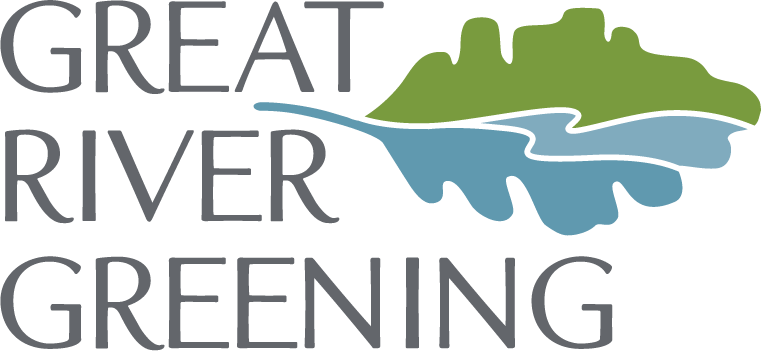Using Goats to Manage Invasive Species
With the ability and willingness to munch on plants like buckthorn and sumac, goats have become a powerful asset for Great River Greening in the management of invasive species across Minnesota.
Great River Greening restores land with the help of herds managed by companies like Diversity Landworks, Goat Dispatch LLC, and The Munch Bunch, who release goats to graze on invasive species while making room for more desirable native species.
Inspiration HOA in Bayport; photo by Becca Tucker
In partnership with the City of Rosemount, we have dispatched goats to Carroll’s Woods. The herd has been grazing since last weekend, and will continue for another two weeks until they have made their way to the northeast portion of Carroll's Woods and Schwarz Pond Park. In total, this pack of 50 goats will cover 15 acres of terrain. This project is supported in part by the Outdoor Heritage Fund through the Metro Big Rivers grant, and by the Minnesota Environment and Natural Resources Trust Fund as recommended by the Legislative-Citizen Commission on Minnesota Resources (LCCMR).
Goats can physically control the growth of woody invasive species like buckthorn as they eat the leaves and bark of the shrubs, preventing those shrubs from getting bigger or spreading. The goats are fast and efficient in this task.
Last fall, we brought goats from Diversity Landworks out to Freedom Park in Wisconsin. They worked toward the same end – efficient removal of invasive species along a steep terrain. Land that is difficult for people to work on is much more accessible to the nimble goat.
Beyond the goats’ helpful snacking, their hooves can serve a purpose as they move across the land. Our field crew will spread seeds of native species before releasing the goats, who can then use their hoofs to work the seeds into the ground.
Great River Greening used this method in 2020 while working with Bayport’s Inspiration HOA on a prairie enhancement project. The goal was to diversify the prairie which consisted mostly of grass. This spring, the treated area sees fewer buckthorn seedlings, and the prairie mix of grasses and flowers is germinating and growing. Homeowners within the Inspiration HOA volunteered alongside our field crew to lay down seed across the prairie before the herd arrived. As the goats grazed the prairie, they worked in the new seed hoof by hoof. This project was also funded in part by the Minnesota Environment and Natural Resources Trust Fund as recommended by the Legislative-Citizen Commission on Minnesota Resources (LCCMR).
Strategic use of goat grazing means we can complete these restoration projects more quickly, at a lower cost, with a lower risk of injury compared to human power alone.

